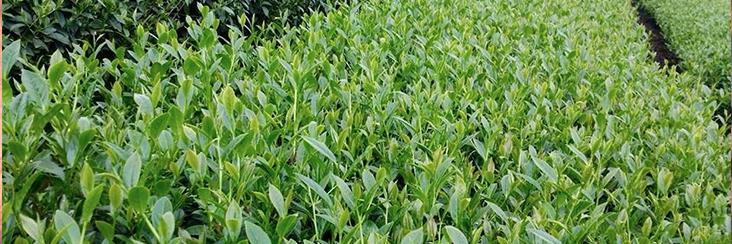
Shanlinxi High Mountain Black Tea | Eco-Cha Tea Club

Above is a shot of the farm in the Shanlinxi region where this batch was grown and harvested at 1700m elevation. Our friend, who participates in virtually every tea competition in central Taiwan with a stunning track record, made this batch of tea happen. He committed to procuring this entire harvest from his friend's farm to ensure that his friend follow his suggested production methods. This crop was cultivated naturally, with no fertilizers or pesticides following the spring harvest. The leaves were picked while still young, perhaps 50% mature, and processed as a black tea. The entire yield of this short summer season's harvest amounted to about 55kg of High Mountain Black Tea.
In the wake of a wave of specialty Black Tea popularity in Taiwan that began with the production and promotion of Red Jade #18 Black Tea about 15 years ago, high elevation Oolong Tea farmers have recently been modifying their seasonal production methods to become more sustainable. Initially, high mountain tea farming methods were based on annual yield — timing the growing seasons and harvests to reap the largest possible annual volume. This basically meant harvesting four times a year, despite the shorter growing seasons at higher elevations. We've listened to many tea farmers relate how it is becoming harder to time these seasonal harvests due to increasingly inconsistent weather patterns over the last several years. This has led to the concept of "three and a half" harvests per year. This "half harvest" is where the recent invention of high elevation Black Tea production comes into play.

Our source explained that in making high elevation black tea, young leaves are optimal because the flavonoids that are responsible for the astringency in tea are less concentrated. When mature leaves are harvested from summer growth and processed as High Mountain Oolong Tea, the tea is noticeably more astringent than other seasons, and is sold at a much cheaper price. But by harvesting young leaves to make Black Tea, although a much smaller yield is reaped, the quality of the Black Tea made from these high elevation crops almost doubles the value. This is yet another aspect of sustainable practice in the tea industry. The high elevation growing conditions, combined with the fact these are Qing Xin Oolong leaves provide enough substance in these young leaves to produce a premium quality Black Tea. Black tea that is made with young leaves is typically smoother and sweeter, with subtle aromatic characteristics that are hard to produce with mature leaves. This is our first time procuring a crop of Black Tea that was made from a crop of Qing Xin tea plants growing at such a high elevation. We find this batch to be quite special, and we are excited to share it!

